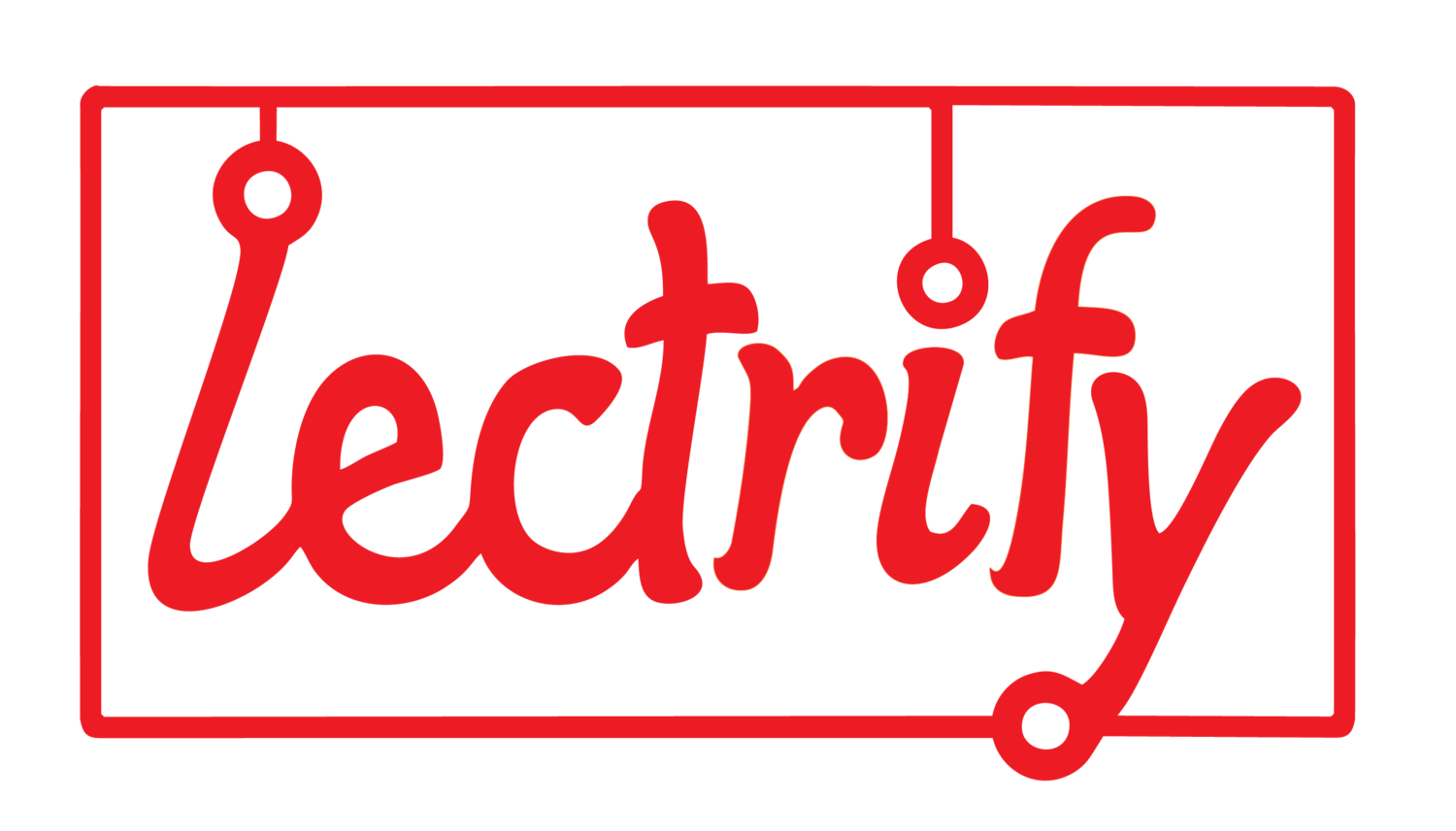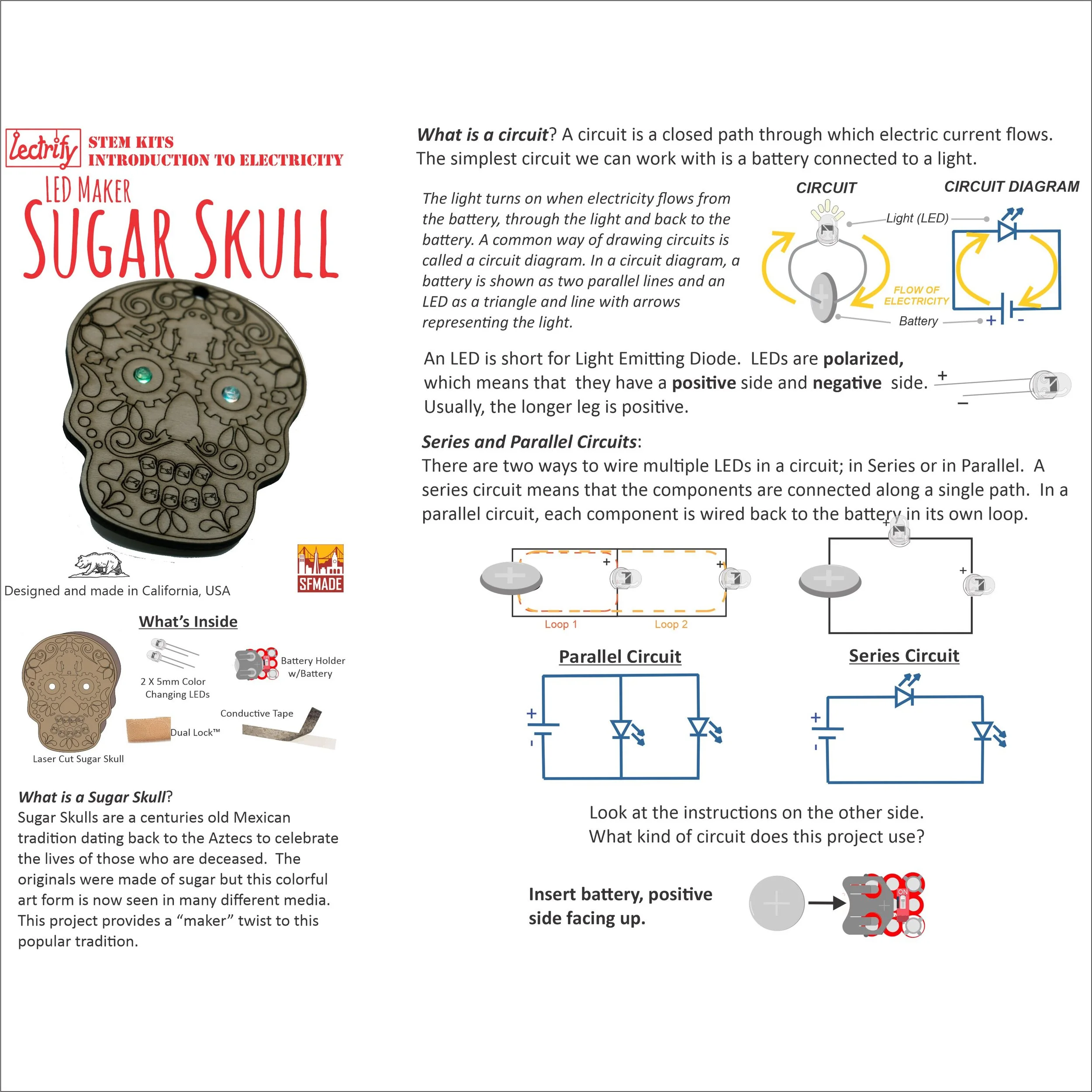STEM Kits - Sugar Skull
STEM Kits - Sugar Skull
Skill Level: Beginner
Duration: <1 hour
Learn about simple circuits, including the difference between serial and parallel circuits by building a Sugar Skull with flashing, color changing LEDs and conductive tape.
Sugar Skulls are a centuries old Mexican tradition dating back to the Aztecs to celebrate the lives of those who are deceased. The originals were made of sugar but this colorful art form is now seen in many different media including sculptures, t-shirts, hats, etc. This project provides a fun “maker” twist to this popular tradition.
Explore simple circuits by building a light up Sugar Skull made of laser cut wood that can be easily decorated with markers, paint, stickers, etc.
1 Battery Holder with battery
2 5mm RGB Color Cycling LEDs
6” Conductive Tape
Dual-Lock
1” Masking Tape
Next Generation Science Standards that align with this project include:
2-PS1-1. Plan and conduct an investigation to describe and classify different kinds of materials by their observable properties.
2-PS1-2. Analyze data obtained from testing different materials to determine which materials have the properties that are best suited for an intended purpose.
4-PS3-2 Make observations to provide evidence that energy can be transferred from place to place by sound, light, heat, and electric currents.
4-PS3-4. Apply scientific ideas to design, test, and refine a device that converts energy from one form to another.
3-5-ETS1-2 Generate and compare multiple possible solutions to a problem based on how well each is likely to meet the criteria and constraints of the problem.
3-5-ETS1-3. Plan and carry out fair tests in which variables are controlled and failure points are considered to identify aspects of a model or prototype that can be improved.






